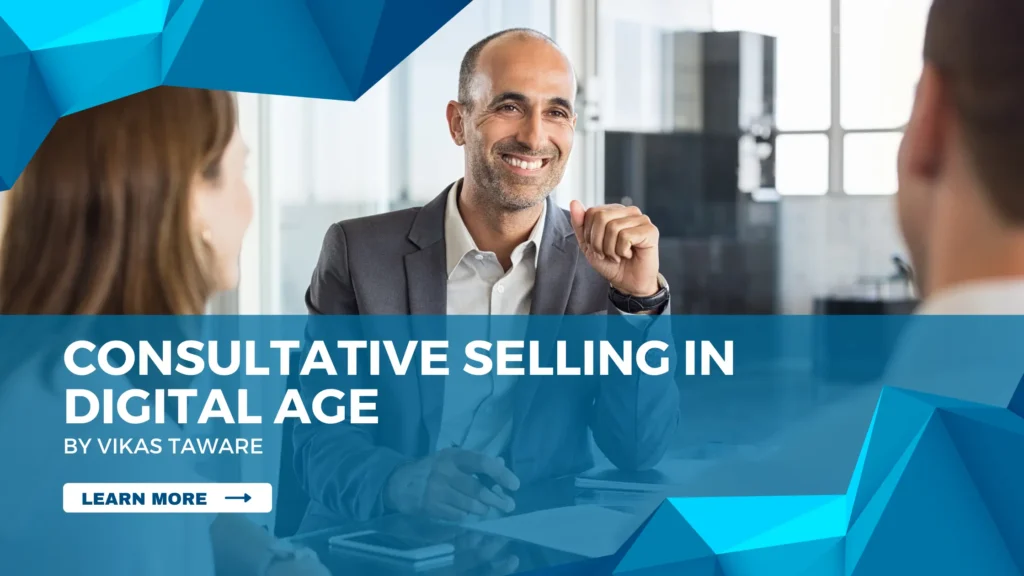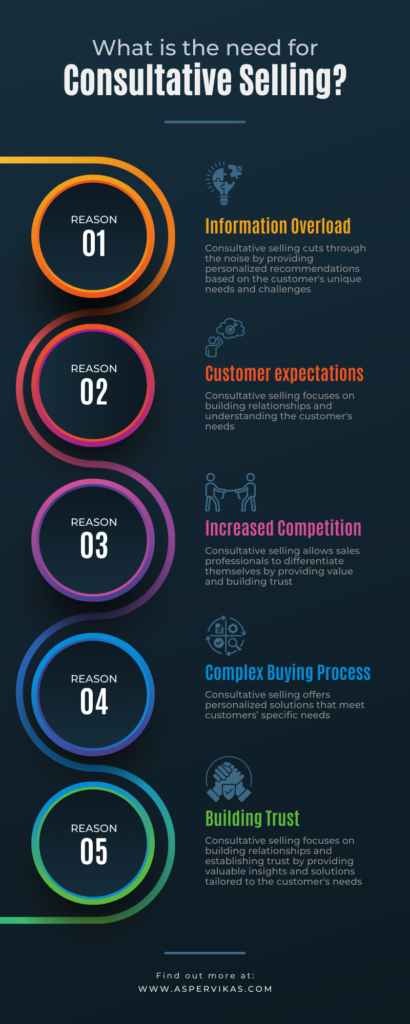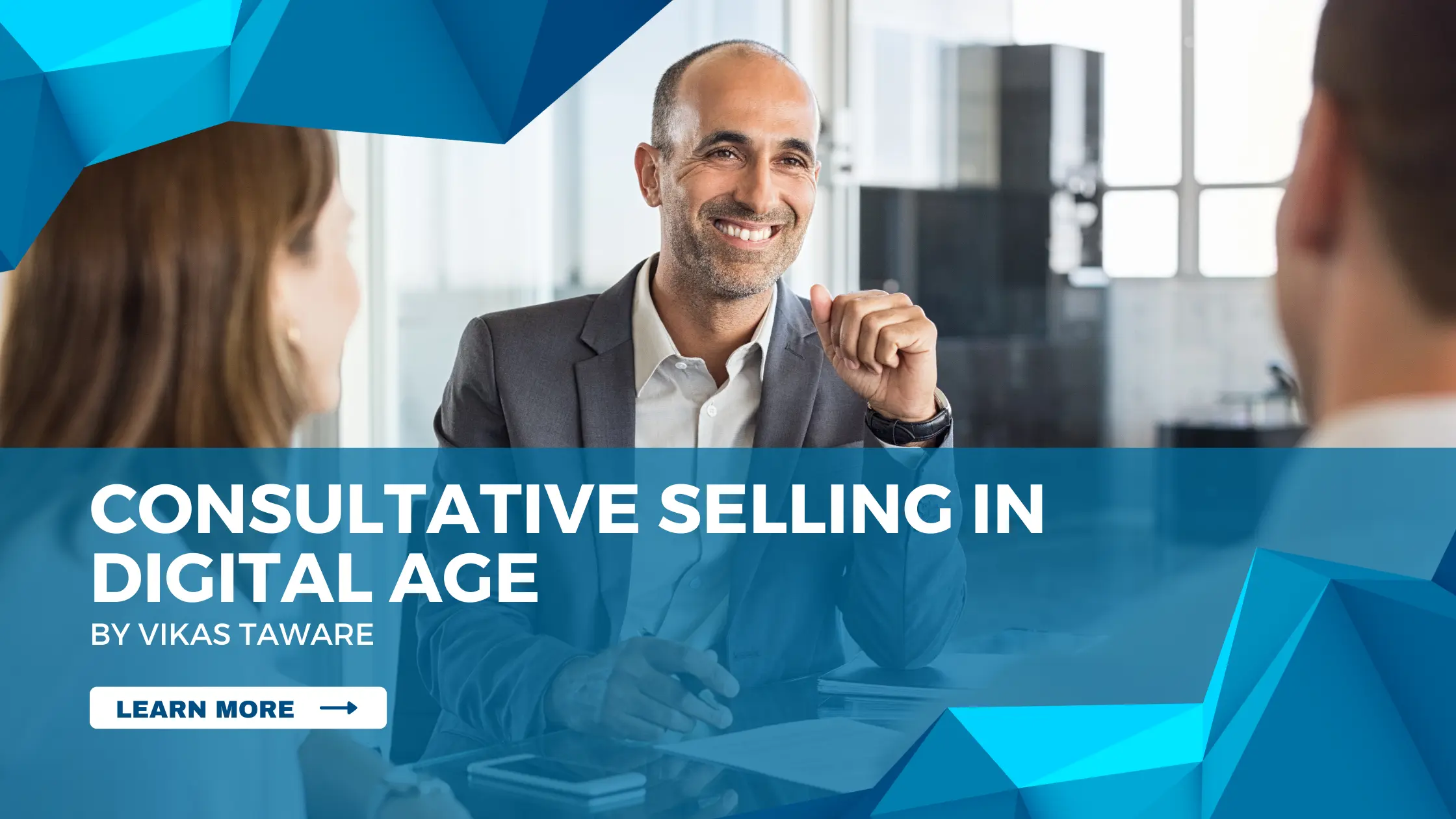Introduction
Let us start this post with an interesting story on consultative selling. I walked into a mobile phone store, all set to grab myself a new phone. Now, being in sales, I know exactly what I want – a phone with a battery that lasts longer than my last job’s review meetings and charges faster than my morning coffee brew.
But here’s the kicker – the sales guy behind the counter was more interested in showcasing every phone in the store than actually listening to what I wanted. I asked him if they had any phones with a 5000mAh battery, and he dismissed me faster than my boss dismisses my expense reports! Instead of considering what I needed, he started yammering on about camera quality and storage space.
Can you guess what I did next? Yep, I ran out of there faster than you can say “upgrade.”
Next stop, another mobile shop. I met Afzal, the sales guy. I told him I needed a new phone.
He didn’t just start throwing phones at me; instead, He asked if I had any specific model in mind. “I have not checked out any models off late,” I answered.
he further asked what I was looking for.
“I need a phone with a battery that can keep up with my kids’ energy,” I said.
Afzal didn’t miss a beat. “And extra storage for all those cute kids’ videos, right?”
“Exactly!” I replied, impressed.
Then he hit me with the golden question: “How old are your kids?”
“Two and a half,” I answered.
“Ah,” he said with a knowing smile. “You’ll need a phone that can handle a few knocks and bumps, then.”
I nodded, thinking about the time my son turned my last phone into a jigsaw puzzle.
And then came the clincher. Afzal showed me one phone that ticked all the boxes – 5000mAh battery, 256GB storage, a camera that could capture every adorable moment, and it was even water and shock-proof! The price? A little over my budget.
Seeing my hesitation, Afzal didn’t just leave me hanging. He offered a no-cost EMI option.
With a grin, I made the purchase.
Now, that, my friends, is what I call consultative selling. Afzal didn’t waste my time showing me every phone in the store; he asked the right questions, understood my needs, and helped me find the perfect phone.
And the first sales guy? I don’t even remember his name. He lost a customer for life by just rambling on about phones I didn’t need. What a waste of time!
Table of Contents

What is the need for Consultative Selling in the digital world?
In the rapidly evolving landscape of digital commerce, the need for consultative selling has never been more critical. Here’s why:
1. Information Overload:
- Challenge: With a plethora of information available online, customers are inundated with options. They can research products and services extensively before ever engaging with a salesperson.
- Solution: Consultative selling cuts through the noise by providing personalized recommendations based on the customer’s unique needs and challenges.
2. Changing Customer Expectations:
- Challenge: Today’s customers expect more than just a transaction; they want a personalized and seamless experience.
- Solution: Consultative selling focuses on building relationships and understanding the customer’s needs, leading to increased customer satisfaction and loyalty.
3. Increased Competition:
- Challenge: The digital age has led to increased competition, making it harder for businesses to stand out.
- Solution: Consultative selling allows sales professionals to differentiate themselves by providing value and building trust with their customers.
4. Complex Buying Process:
- Challenge: Many products and services have complex features and pricing structures, making the buying process confusing for customers.
- Solution: Consultative selling helps simplify the buying process by guiding customers through each step and offering personalized solutions that meet their specific needs.
5. Building Trust in a Digital World:
- Challenge: Building trust can be difficult in a digital environment where face-to-face interactions are limited.
- Solution: Consultative selling focuses on building relationships and establishing trust by providing valuable insights and solutions tailored to the customer’s needs.

Consultative Selling Process
In the digital world, the consultative selling process remains focused on building relationships, understanding customer needs, and providing personalized solutions, but it incorporates digital tools and channels to enhance the customer experience. Here’s a step-by-step breakdown of the consultative selling process in the digital world:
Step 1: Online Research and Preparation
- Research the Prospect: Utilize online resources such as the prospect’s website, social media profiles, and industry publications to gather information about their business, challenges, and goals.
- Understand the Product or Service: Leverage digital tools to gain a deep understanding of the features, benefits, and value proposition of your product or service.
Step 2: Digital Approach and Introduction
- Initiate Contact: Reach out to the prospect through digital channels such as email, social media, or instant messaging.
- Personalize Your Message: Tailor your message to the prospect’s specific needs and challenges to demonstrate that you’ve done your research and understand their business.
Step 3: Virtual Discovery
- Schedule a Virtual Meeting: Use video conferencing tools to conduct a virtual discovery meeting with the prospect.
- Ask Open-Ended Questions: Encourage the prospect to share information about their business, challenges, and goals.
- Utilize Digital Collaboration Tools: Share screens, documents, and presentations to facilitate a collaborative discussion.
Step 4: Digital Needs Analysis
- Identify Pain Points: Use digital tools to delve deeper into the prospect’s specific pain points and challenges.
- Utilize Data Analytics: Analyze data to quantify the impact of the prospect’s challenges and demonstrate the potential ROI of your solution.
Step 5: Virtual Presentation
- Tailor the Solution: Based on the information gathered during the discovery phase, present a solution that addresses the prospect’s specific needs and challenges.
- Utilize Multimedia Content: Incorporate multimedia content such as videos, animations, and interactive presentations to engage the prospect and bring your solution to life.
Step 6: Digital Objection Handling
- Address Concerns: Anticipate and address any objections or concerns the prospect may have using digital communication channels.
- Provide Solutions: Offer additional information, case studies, or testimonials to alleviate the prospect’s concerns and build confidence in your solution.
Step 7: Virtual Closing
- Ask for the Sale: Once you’ve addressed the prospect’s concerns and demonstrated the value of your solution, ask for the sale using digital communication channels.
- Utilize E-Signature Tools: Streamline the contract signing process by using e-signature tools to expedite the closing process.
Step 8: Digital Follow-Up
- Thank the Prospect: Express gratitude for their time and consideration through digital communication channels.
- Stay Engaged: Continue to stay in touch with the prospect through email, social media, and other digital channels, providing additional information or support as needed.
- Utilize Marketing Automation: Use marketing automation tools to nurture leads and provide ongoing value to prospects through personalized email campaigns, content sharing, and targeted messaging.
Consultative Selling Vs Product Selling
Consultative selling and product selling are two distinct approaches to sales, each with its own advantages and applications. Here’s a comparison of the two:
Consultative Selling:
Focus:
- Customer Needs: Consultative selling focuses on understanding the customer’s needs, challenges, and goals.
- Building Relationships: It emphasizes building long-term relationships with customers based on trust and mutual understanding.
Approach:
- Question-Based: Sales professionals ask open-ended questions to uncover the customer’s needs and pain points.
- Problem-Solving: The focus is on providing personalized solutions that address the customer’s specific needs and challenges.
Benefits:
- Customer-Centric: By focusing on the customer’s needs, consultative selling helps build trust and loyalty, leading to stronger, long-term relationships.
- Value-Added: It allows sales professionals to position themselves as trusted advisors, rather than just product pushers.
Example:
- A salesperson who practices consultative selling might ask questions like, “What are your biggest challenges with your current software system?” or “What goals are you hoping to achieve with a new solution?”
Product Selling:
Focus:
- Product Features: Product selling focuses on highlighting the features and benefits of the product or service being sold.
- Closing the Sale: The primary goal is to convince the customer to purchase the product based on its features and benefits.
Approach:
- Feature-Based: Sales professionals emphasize the features and capabilities of the product or service.
- One-Size-Fits-All: The focus is on selling the same product to as many customers as possible.
Benefits:
- Efficiency: Product selling can be more efficient, as it often involves a standardized sales pitch that can be used with multiple customers.
- Transactional: It is well-suited for customers who have a clear idea of what they want and are primarily focused on finding the best product at the best price.
Example:
- A salesperson who practices product selling might highlight the speed, performance, and storage capacity of a new smartphone without necessarily delving into the customer’s specific needs or challenges.
Comparison:
Customer Focus:
- Consultative selling is customer-focused, aiming to understand and address the customer’s specific needs.
- Product selling is product-focused, emphasizing the features and benefits of the product or service being sold.
Relationship Building:
- Consultative selling prioritizes building long-term relationships based on trust and understanding.
- Product selling is often more transactional, focusing on closing the sale quickly based on the features and benefits of the product.
Approach:
- Consultative selling involves asking questions, listening to the customer, and providing personalized solutions.
- Product selling involves presenting the features and benefits of the product or service and convincing the customer to make a purchase.
Both consultative selling and product selling have their place in the sales process, and the most effective approach will depend on the customer’s needs, preferences, and buying behavior. However, in today’s customer-centric market, where customers have access to more information and options than ever before, consultative selling is often the more effective approach for building long-term relationships and driving customer loyalty.
| Consultative Selling | Product Selling | |
| Focus | On customer needs | On product features |
| Focus | On building relationship | On closing the sale |
| Approach | Questions-based | Features-based |
| Approach | Problem solving | One size fits for all |
| Benefits | Customer-centric | Efficiency |
| Benefits | Value added | Transactional |
Resources to learn Consultative Selling
Learning consultative selling is essential for sales professionals who want to excel in their field. Here are some resources to help you learn consultative selling:
Books:
- “The Challenger Sale: Taking Control of the Customer Conversation” by Matthew Dixon and Brent Adamson
- Offers insights into how to take a consultative approach to selling by challenging customers’ preconceived notions and providing valuable insights.
- “SPIN Selling” by Neil Rackham
- Provides a step-by-step approach to consultative selling based on extensive research into successful sales techniques. I have also covered SPIN selling in my previous blog post.
- “To Sell is Human: The Surprising Truth About Moving Others” by Daniel H. Pink
- Explores the art of selling in today’s world and offers practical strategies for becoming a more effective salesperson, including the importance of empathy and understanding customer needs.
Online Courses:
- LinkedIn Learning: “Consultative Sales Foundations”
- This course covers the fundamentals of consultative selling, including building rapport, asking the right questions, and presenting solutions effectively.
- Udemy: “Consultative Selling: The Comprehensive Guide”
- Provides a comprehensive overview of consultative selling techniques, including how to identify customer needs, present solutions, and overcome objections.
Podcasts:
- “The Advanced Selling Podcast”
- Hosted by sales trainers Bill Caskey and Bryan Neale, this podcast covers a wide range of sales topics, including consultative selling techniques and strategies.
- “The Sales Evangelist”
- Hosted by Donald C. Kelly, this podcast features interviews with sales experts and provides practical advice for improving sales skills, including consultative selling.
Blogs and Articles:
- HubSpot Sales Blog
- Offers a wealth of resources on sales techniques and strategies, including consultative selling best practices and tips.
- Salesforce Blog
- Provides insights and advice from sales experts on a variety of topics, including consultative selling and building customer relationships.
Online Communities:
- Sales Hacker Community
- A community of sales professionals where you can connect with others in the field, ask questions, and share advice and best practices.`
- Quora: Sales Topic
- A platform where you can ask questions and get answers from sales professionals on a wide range of topics, including consultative selling.
Conclusion
In today’s digital age, where customers have more options and information than ever before, consultative selling is essential for sales professionals to stand out from the competition, build trust with their customers, and ultimately drive more sales. As sales professionals, we must realise that consultative selling in the digital world is not just a strategy, it is a necessity for success.


Leave a Comment